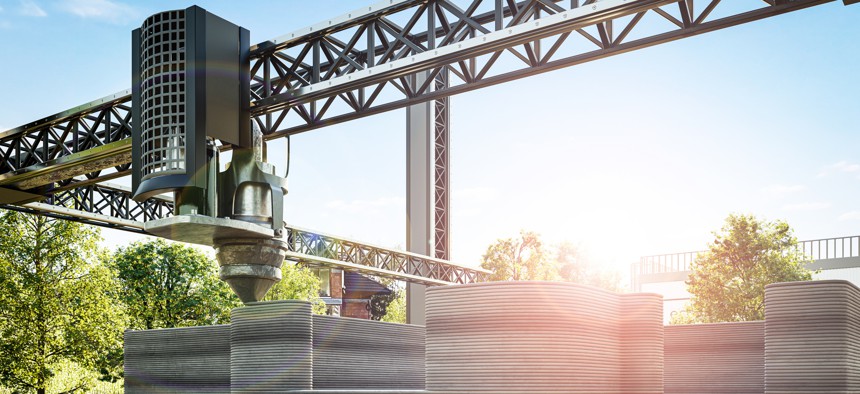Could 3D-printed housing help address Oklahoma’s affordable housing crisis? A lawmaker thinks so

guteksk7 via Getty Images
A state lawmaker wants to use the same technology that is being considered for use on Mars to help tackle Oklahoma’s affordable housing crisis.
This article was originally published by Oklahoma Voice.
A state lawmaker wants to use the same technology that is being considered for use on Mars to help tackle Oklahoma’s affordable housing crisis.
State Rep. Mickey Dollens, D-Oklahoma City, said he’s working on legislation that among other things will expand the state’s housing tax credit to include 3D-printed homes.
Dollens said the homes can be built from as little as $14 per square foot.
“One of the reasons this is more affordable is because it requires less components,” he said.
The homes are constructed by pouring a foundation, printing the floor plan and topping the home off with a traditional roof. Each home can be customized, and proponents said the housing could be a better option for Oklahoma’s severe weather due to using stronger material and foundations compared to mobile homes.
The 3D-printed houses were originally created to be built on Mars since there is no oxygen for builders, and Dollens said he expects these houses will work in a similar way.
Over a dozen other states already allow such homes to be built, according to Alper Real Estate Group, which has studied the emerging technology.
Tyler Ley, an Oklahoma State University structural engineering professor, said that the technology has minimal formwork, saves labor, has faster delivery and less waste, but conventional 3D-printing can cost more than conventional construction. But Ley said that he believes 3D print construction will become standard practice if given time.
Ley said at an Oklahoma interim study earlier this year that his goal is to make the technology so easy to use that it will allow anyone to build their own home.
Ley built a 30-by-20-foot building with 8-foot walls in 14 hours using four students with no construction experience.
He said it can also be used to construct agricultural structures, retaining walls, box culvert bridges and water tanks.
The National Association of Home Builders warns that the technology is still new and that it could result in disputes over defective construction. The group said this technology requires a concrete building specialist to watch the build.
Mighty Buildings, a 3D-printing construction company based in California, also participated in the interim study at the Capitol.
Brian Annechino, vice president of sales and business development, said that houses are printed in panels and assembled at the desired location. Panels can cost as low as $20, meaning the average single-family home would cost about $50,000.
The company uses a stone-like material that is cured and printed with an ultraviolet light. Annechino said material is stronger and lighter than concrete and resistant to mold, water, mildew, and insects and is created to weather a 9.0-magnitude earthquake and a Category 5 hurricane.
Editor’s note: This story was produced through a reporting partnership between Oklahoma Voice and the University of Central Oklahoma’s journalism program.





